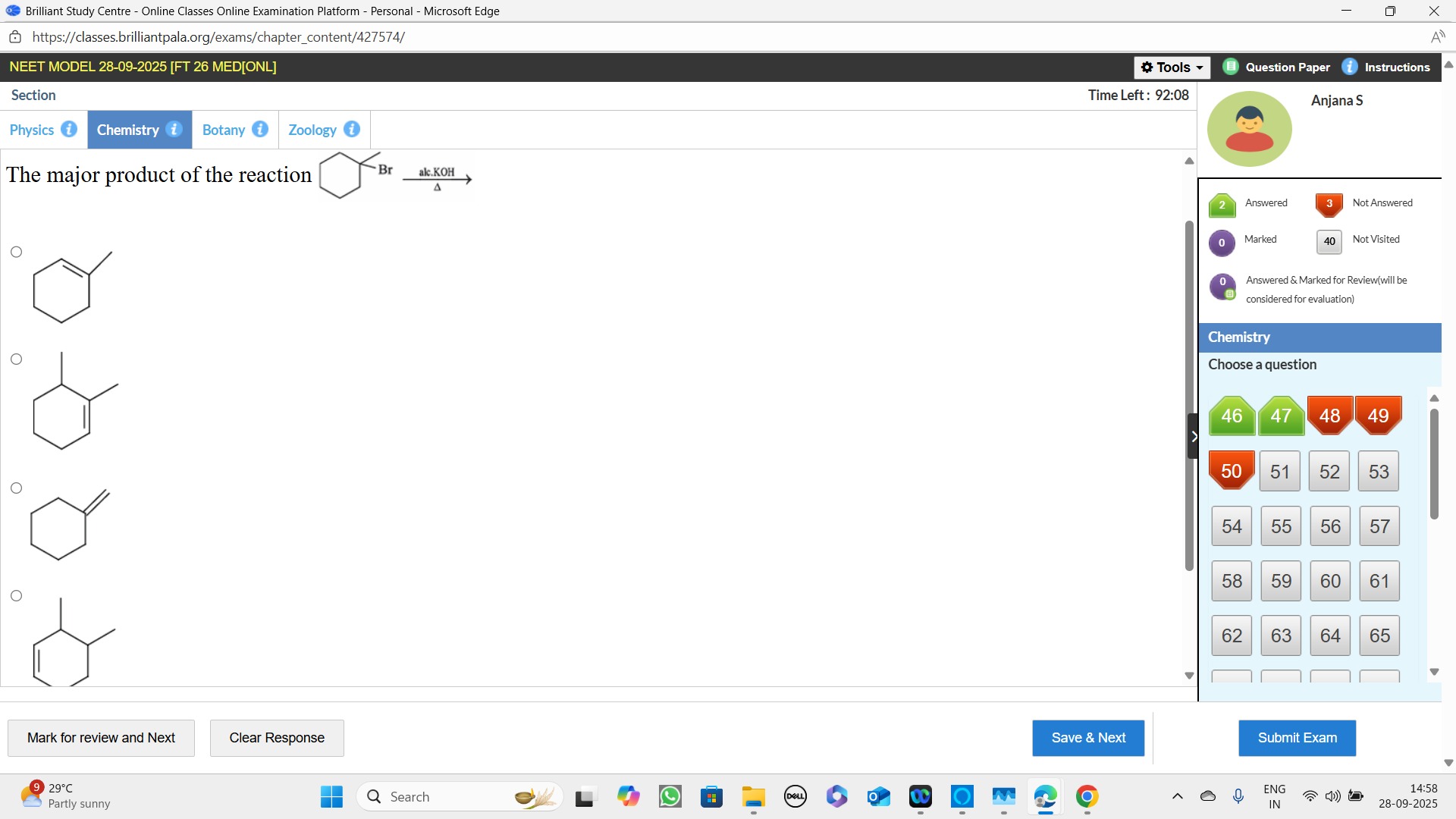Question
Question: The major product of the reaction...
The major product of the reaction

A cyclohexane ring with a double bond between two adjacent carbons. One of these carbons is substituted with a methyl group, while the other is not.
A dimethylcyclohexene structure.
1,1-dimethylcyclohexene.
A dimethylcyclohexene with methyl groups on carbons adjacent to the double bond.
1-methylcyclohexene
Solution
The reaction involves the E2 elimination of HBr from 1-bromo-1-methylcyclohexane using alcoholic KOH and heat. In this reaction, a strong base abstracts a proton from a β-carbon, and the leaving group (bromide) departs simultaneously, forming a double bond. The reactant is 1-bromo-1-methylcyclohexane. The β-carbons are the carbons adjacent to the carbon bearing the bromine and methyl group. Both adjacent carbons in the cyclohexane ring have one hydrogen atom. Elimination can occur towards either β-carbon, both leading to the formation of 1-methylcyclohexene. According to Zaitsev's rule, the more substituted alkene is the major product. In this case, the alkene formed is trisubstituted and is the only possible constitutional isomer, making it the major product.
